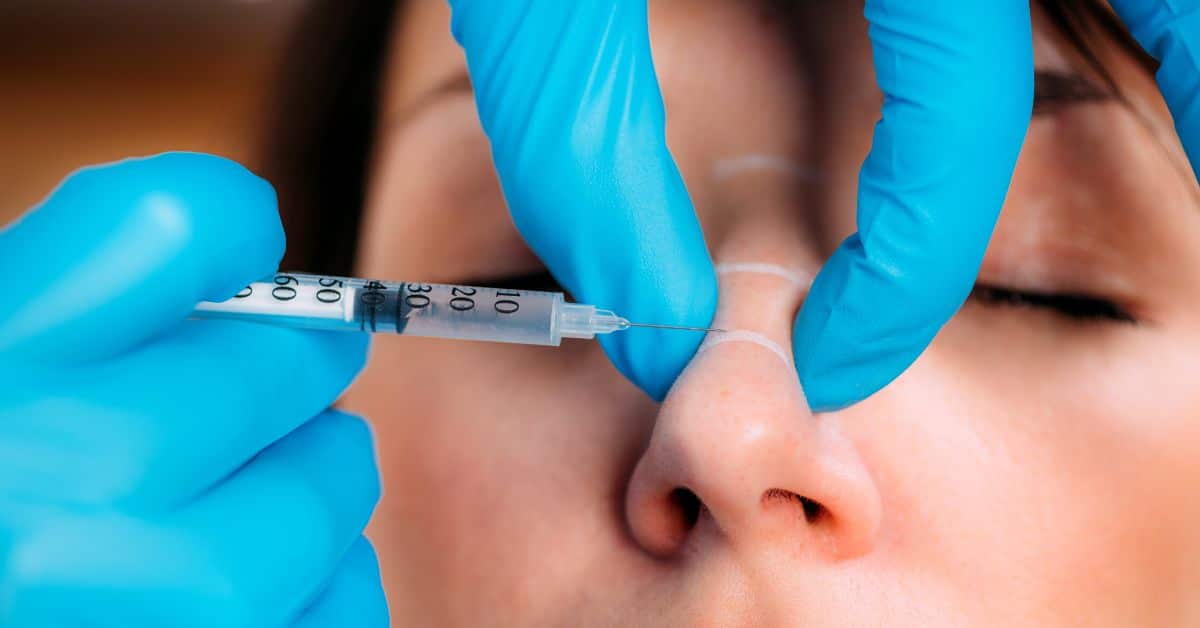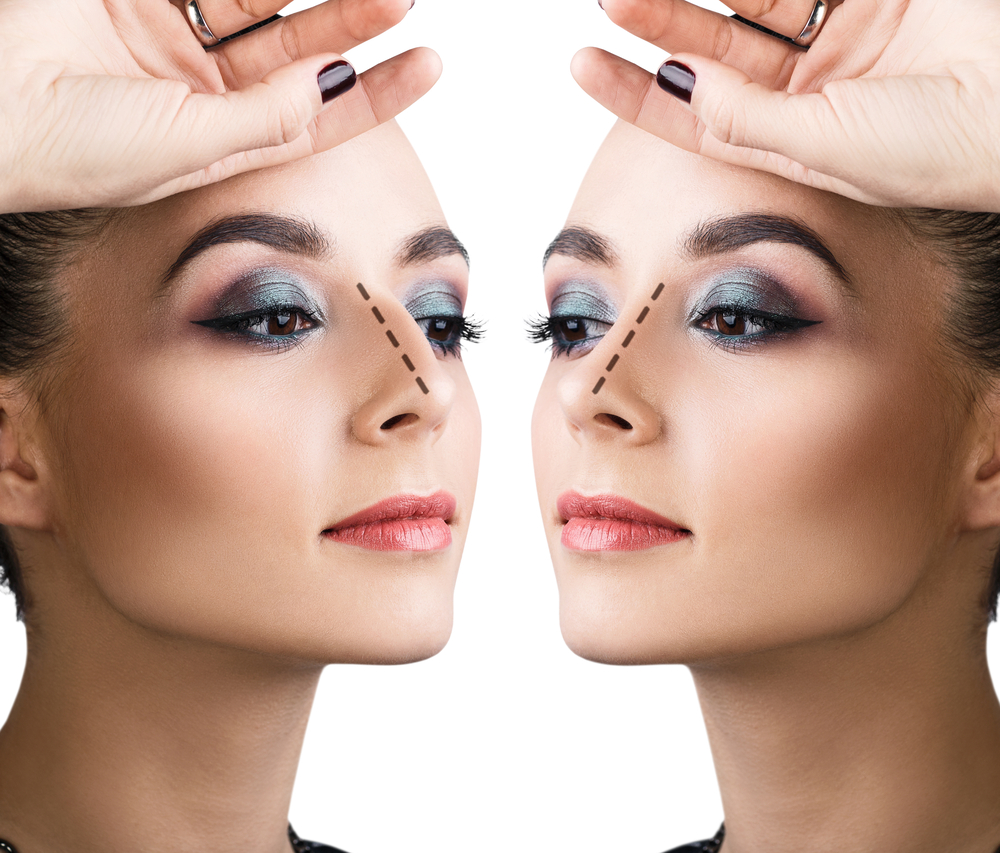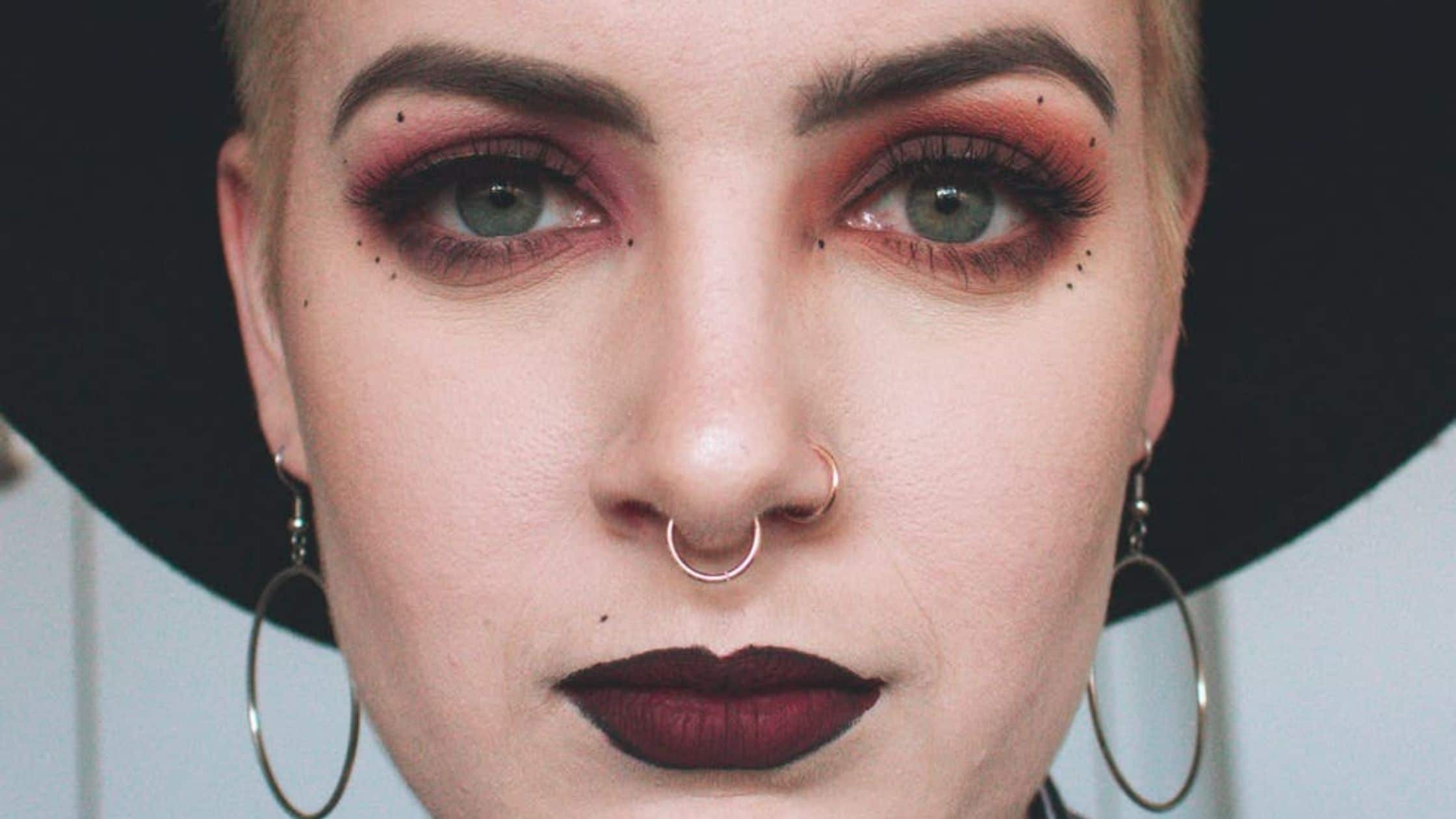The nose filler procedure, also known as non-surgical rhinoplasty, is a dermal filler procedure that can address a variety of issues, including leveling dorsal humps, raising sagging nasal tips, and straightening bumps in the nose irrespective of the nose shapes.
Dermal filler (made of hyaluronic acid) is selectively injected using a tiny needle to contour the nose. The best thing is that no surgery is required, meaning there will be little recovery time and maximum results!
Nose fillers can restore the nose and enhance the facial profile without surgery by softly contouring, straightening, and enhancing the nose. But you should know that they come with some side effects.
In this article, we will learn about nose filler side effects and aftercare.
Are Nose Fillers Dangerous?
Dermal fillers are injected into the nose during non-surgical rhinoplasty procedures to alter the size or contour of the nose. People are now more conscious of lip fillers that have degraded over the past few years.
Fillers can improve facial volume and enhance your natural beauty in a secure, minimum-intrusive manner. They do not come without risks, though. For instance, the following are the nose filler side effects:
- Infection: There is a slight possibility of infection at the injection site.
- Bleeding: A minor quantity of bleeding could happen while the surgery is being done.
- Allergic reactions: An allergic reaction to the filler may, in rare circumstances, take place.
- Swelling and bruising: Around the injection site, swelling and bruising are frequent but normally go away in a few days.
- Nerve damage: This condition, which only rarely happens, can result in numbness or a lack of feeling in the nose.
- Migration of the filler: The filler may move away from its original location, giving the appearance of being unnatural.
- Granulomas: A granuloma is a mass that can occasionally occur under the skin as a result of the filler.
- Overcorrection or asymmetry: After the operation, the nose could appear overly big or asymmetrical.
- Breathing issues: If the filler is injected into the airway, it could cause breathing issues.
It’s crucial to remember that these dangers are uncommon and only arise when an untrained or unqualified practitioner performs the treatment. A board-certified dermatologist or plastic surgeon should always be consulted before any major procedure.
How Long Does Nose Filler On The Nose Last?
Although filler in nose only lasts between 12 and 18 months, if you receive further procedures, you can get a longer-lasting look with filler top-ups alone.
Dermal filler injections in the nose area typically last longer than other areas because it is a low-movement area of the face (as opposed to, for example, the mouth or eyes).
Lip fillers last for roughly four months, but non-surgical rhinoplasty lasts for a little over a year for the majority of people because the dermal filler is absorbed more quickly if there is a lot of facial activity.
Before receiving therapy, it is crucial to go over any possible dangers and side effects of non-surgical nose job with a licensed and competent practitioner.
Can Fillers Change Nose Shape?
Hyaluronic acid fillers, for example, can be utilized to give the nose more volume and form. This is referred to as non-operative rhinoplasty. Fillers can be used to address small flaws or asymmetries, but they cannot significantly alter the nose’s shape.
Generally speaking, nose fillers can be used in three different ways that each work well to change and contour the nose. Nose fillers can assist with:
- Narrowing the bridge of the nose using dermal fillers: The width of the nose might appear broader or narrower depending on how light reflects off the bridge of the nose. Dermal filler can therefore be injected precisely over the nose, tracing the regions of skin with the greatest light reflection. This can make the nose appear smaller, but only a certified, trained, and a highly skilled practitioner can use it; otherwise, the effects won’t be the same.
- Using dermal fillers to elevate the nose: As we age, our skin naturally loses volume and flexibility, which can cause it to sag and droop. The tip of the nose may also experience this, causing it to droop lower than usual. The base of the nose can be lifted using dermal filler injections, leaving the nose appealing without being overly elongated.
- Correcting nasal asymmetry with dermal fillers: An asymmetrical nose can make people feel self-conscious and reduce their self-esteem. But this is simply a matter of injecting dermal filler strategically and subtly. Dermal fillers can be injected by a highly qualified specialist to recontour and reshape the nose. This may entail minimizing the appearance of bumps or removing dents or dips.
Typically, surgical rhinoplasty is advised if a major alteration in nose shape is desired. Before undergoing any operation, it’s crucial to speak with a board-certified dermatologist or plastic surgeon.
Does Your Nose Go Back To Normal After Fillers?
The type and quantity of filler used, as well as the injector’s competence, will all have an impact on how your nose looks following treatment. The effects of fillers normally last between six months and a year, and they are generally thought of as temporary fixes.
The nose will then resume its pre-treatment appearance when the filler is metabolized by the body. To retain their ideal appearance, patients frequently get touch-up procedures.
To discuss the treatment’s potential risks and benefits and to make sure you are happy with the outcomes, it is crucial to speak with a skilled and experienced injector.
Nose Filler Aftercare
Being cautious with your new nose after the treatment is crucial! To get the most out of your treatment, you must adhere to the aftercare instructions that will be given to you at your visit.
It’s crucial to avoid rubbing or massaging the treated region after a nose filler surgery to avoid the filler being displaced. Applying cold compresses can help to lessen bruising and swelling.
For at least 24 hours, abstain from vigorous activity, excessive sun or heat exposure, and alcoholic beverages. Aspirin and ibuprofen should be avoided for a few days before and following the procedure, as they both thin the blood.
It’s also crucial to adhere to any additional directions given by the medical professional who carried out the treatment.
FAQs
A: The nose filler procedure is a dermal filler procedure that can address a variety of issues, including leveling dorsal humps, raising sagging nasal tips, and straightening bumps in the nose.
A: The common non-surgical nose job side effects include bruising, swelling, redness, discomfort or pain, and infection.
A: It’s crucial to avoid rubbing or massaging the treated region after a nose filler surgery to avoid the filler being displaced. Applying cold compresses can help to lessen bruising and swelling.









